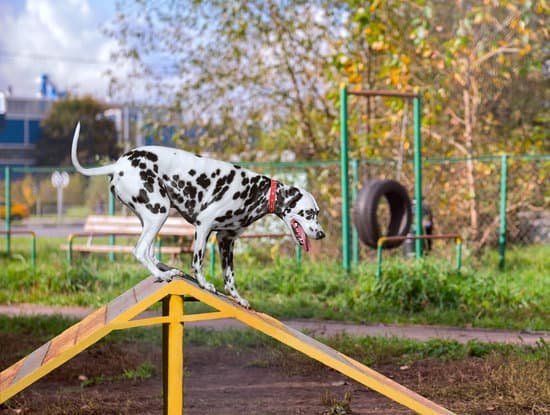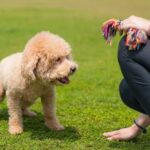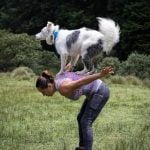Are you tired of coming home to find your favorite shoes destroyed by your furry friend? If so, learning how to train your dog not to chew on shoes is crucial. Understanding the reasons behind this behavior and implementing the right training techniques can help you maintain a harmonious relationship with your canine companion.
Dogs chew on shoes for various reasons, including teething, boredom, anxiety, or simply out of curiosity. Identifying the root cause of your dog’s chewing behavior is essential in addressing the issue effectively. By understanding why dogs engage in this behavior, pet owners can tailor their training approach to meet their dog’s specific needs.
Once you have recognized the underlying cause of your dog’s chewing behavior, providing appropriate chew toys for them is crucial. Dogs need an outlet for their natural urge to gnaw and chew, and offering them suitable toys can redirect their attention away from your shoes. Additionally, consistency in training and setting boundaries is key to teaching your dog what items are off-limits for chewing. Using positive reinforcement techniques can also encourage good behavior and discourage destructive habits.
By proactively managing the environment to prevent chewing and seeking professional help if necessary, pet owners can set their dogs up for success. It’s important to remember that relapses in chewing behavior may occur, but armed with the right tools and knowledge, you can navigate through these challenges and eventually enjoy a chew-free relationship with your beloved canine companion.
Identifying the Type of Chewing Behavior
Understanding the type of chewing behavior your dog is exhibiting is crucial in addressing and correcting the issue. There are various reasons why dogs chew on shoes, including teething, boredom, anxiety, and lack of proper stimulation. By identifying the specific cause of your dog’s chewing behavior, you can effectively address the problem and prevent future instances.
One type of chewing behavior is exploratory chewing, which often occurs in puppies as they use their mouths to learn about their environment. If this is the case, providing appropriate chew toys for your puppy can help redirect their chewing behavior away from shoes and other inappropriate items.
Another type of chewing behavior is destructive chewing, which can be a sign of stress or anxiety in dogs. Identifying the triggers for your dog’s anxiety and addressing them can help reduce destructive chewing.
It’s important to observe your dog’s chewing behavior to determine the underlying cause before implementing any training techniques or corrective measures. For example, using positive reinforcement techniques such as praise or treats when your dog chews on appropriate toys can encourage them to continue this behavior and discourage shoe-chewing. Consistency in training and setting boundaries is also key in addressing different types of chewing behaviors in dogs.
| Identifying Chewing Behavior | Types of Chewing Behavior |
|---|---|
| Exploratory Chewing | Puppies using mouths to learn about environment |
| Destructive Chewing | A sign of stress or anxiety in dogs |
Providing Appropriate Chew Toys for Dogs
It’s important to remember that chewing is a natural behavior for dogs, and providing appropriate chew toys can help redirect their chewing behavior away from your shoes. When choosing chew toys for your dog, it’s essential to consider the size, material, and durability of the toy. Look for toys that are specifically designed for heavy chewers and are made of non-toxic materials to ensure the safety of your furry friend.
There are various types of chew toys available in the market, including rubber toys, nylon bones, and puzzle toys. Each dog may have different preferences when it comes to chew toys, so it may take some trial and error to find the right ones for your pet. Interactive or puzzle toys can be particularly beneficial as they not only satisfy your dog’s chewing instincts but also provide mental stimulation and prevent boredom.
Additionally, rotating your dog’s chew toys can help maintain their interest in the toys and prevent them from getting bored with a particular toy. This can be especially helpful during the teething phase when puppies have an increased need to chew. By providing a variety of textures and shapes in their chew toys, you can keep your dog engaged and minimize their inclination to chew on inappropriate items such as shoes.
| Chew Toy Type | Benefits |
|---|---|
| Rubber Toys | Durable and ideal for heavy chewers. |
| Nylon Bones | Long-lasting and safe for dogs. |
| Puzzle Toys | Provide mental stimulation and prevent boredom. |
Consistency in Training and Setting Boundaries
When it comes to training your dog not to chew on shoes, consistency is key. Dogs thrive on routine and respond well to consistent training methods. Here are a few tips for maintaining consistency in your training:
- Establish clear boundaries: Set clear boundaries for your dog when it comes to chewing on shoes. Make sure everyone in the household is on the same page and enforces these boundaries consistently.
- Use consistent commands: When you catch your dog chewing on a shoe, use a consistent command such as “no” or “leave it.” Be sure to use the same command every time to help reinforce the behavior you want.
- Stick to a regular schedule: Dogs do well with routines, so try to stick to a regular feeding, exercise, and training schedule. This will help your dog understand what is expected of them and reduce anxiety that can lead to destructive behaviors like chewing.
By maintaining consistency in your training methods and setting clear boundaries, you can effectively teach your dog not to chew on shoes.
Remember that patience is key when it comes to dog training. It may take some time for your dog to understand what is expected of them, so be patient and consistent with your training efforts. With time and effort, you can enjoy a chew-free relationship with your furry friend.
Using Positive Reinforcement Techniques
Understanding Positive Reinforcement
Positive reinforcement is a powerful tool in dog training that involves rewarding your dog for displaying desired behaviors. When it comes to preventing chewing on shoes, positive reinforcement can be a highly effective technique. By rewarding your dog with treats, praise, or playtime when they choose to chew on their toys instead of shoes, you are encouraging them to repeat the desirable behavior.
Training With Consistency
Consistency is key when using positive reinforcement techniques. Make sure that everyone in the household is on the same page and follows the same rules when it comes to rewarding your dog for good behavior. This will help avoid confusion and create a clear understanding for your dog of what is expected of them.
Avoid Punishment
It’s important to note that positive reinforcement should never be paired with punishment when training your dog not to chew on shoes. Punishment can cause fear and anxiety in dogs, leading to further behavioral issues. Instead of scolding or punishing your dog for chewing on shoes, redirect their behavior by offering an appropriate chew toy and then reward them for engaging with it.
Managing the Environment to Prevent Chewing
Dogs, especially puppies, are naturally curious and love to explore the world around them with their mouths. Chewing is a normal behavior for dogs, but when they start chewing on shoes, it can become a problem. One way to prevent your dog from chewing on shoes is by managing the environment.
Keep Shoes Out of Reach
One of the most effective ways to manage your dog’s environment is by keeping your shoes out of reach. Store your shoes in closed closets or cabinets where your dog cannot access them. If you have a large shoe collection, consider investing in a shoe rack or storage system that keeps them off the ground and out of your dog’s reach.
Use Bitter Apple Spray
Bitter apple spray is a non-toxic deterrent that can be sprayed on shoes and other items to discourage dogs from chewing on them. The bitter taste will deter your dog from chewing on the sprayed items without causing any harm. It’s important to reapply the spray regularly, especially after cleaning or getting the item wet.
Provide Safe Chew Toys
In addition to keeping shoes out of reach, provide your dog with safe chew toys to redirect their chewing behavior. Look for toys that are durable and designed for heavy chewers. Chew toys not only satisfy your dog’s natural urge to chew, but they also keep them entertained and mentally stimulated, reducing their likelihood of turning to shoes for chewing.
By managing the environment to prevent chewing, you can effectively eliminate the temptation for your dog to chew on shoes and other inappropriate items within your home. Remember that consistency is key in training and setting boundaries for your furry friend.
Seeking Professional Help if Necessary
If you have tried various techniques and your dog still continues to chew on shoes, it may be time to seek professional help. A dog behaviorist or trainer can provide guidance and expertise in addressing this issue. Here are some steps you can take when seeking professional help:
- Research qualified dog behaviorists or trainers in your area.
- Read reviews and ask for recommendations from other pet owners.
- Schedule a consultation with the behaviorist or trainer to discuss your dog’s chewing behavior.
- Be open to following their recommendations and advice for training and managing your dog’s behavior.
Professional help can make a significant difference in addressing your dog’s chewing habits. A trained expert can assess the root cause of the chewing behavior and develop a personalized plan to modify it.
In some cases, there may be underlying issues such as anxiety or boredom that contribute to the chewing behavior. A professional can provide valuable insights and strategies to address these issues effectively. Remember that seeking professional help is a proactive step towards ensuring a chew-free relationship with your beloved pet.
Tips for Dealing With Relapses in Chewing Behavior
Dealing with relapses in chewing behavior can be frustrating for dog owners, but it is important to stay patient and consistent when addressing this issue. Relapses in chewing behavior can occur for a variety of reasons, such as stress, anxiety, or boredom. It’s essential to understand the underlying cause of the relapse in order to effectively address the problem.
One tip for dealing with relapses in chewing behavior is to reevaluate the chew toys and enrichment activities that are available to your dog. Make sure that your dog has a variety of appropriate chew toys and interactive toys to keep them mentally stimulated and engaged. Rotating the toys regularly can also help prevent boredom and reduce the likelihood of relapse in chewing behavior.
Another helpful tip is to revisit your training and reinforcement techniques. Positive reinforcement, such as using treats or praise when your dog chews on an appropriate toy, can be effective in preventing relapses in chewing behavior. Consistency in training is key, so continue to reinforce positive behavior while discouraging chewing on inappropriate items.
It’s also important to manage the environment to prevent relapses in chewing behavior. Keep shoes and other tempting items out of your dog’s reach, especially during times when they may be more prone to anxiety or stress. Creating a safe and stimulating environment for your dog can help reduce the likelihood of relapses in chewing behavior and promote a healthy relationship between you and your pet.
Conclusion
In conclusion, training your dog not to chew on shoes requires understanding the reasons behind this behavior and addressing them with appropriate techniques. By identifying the type of chewing behavior and providing suitable chew toys, you can redirect your dog’s focus away from your shoes. Consistency in training and setting boundaries is crucial in teaching your dog what is acceptable to chew on and what is not.
Using positive reinforcement techniques such as praise, treats, and rewards can help reinforce good behavior and discourage shoe chewing. Managing the environment by keeping shoes out of reach and using deterrent sprays can also prevent chewing incidents. However, it’s important to remember that seeking professional help may be necessary if the problem persists or if the chewing behavior is excessive.
While relapses in chewing behavior may occur, it’s important to remain patient and consistent in your training efforts. With persistence and the right approach, you can enjoy a chew-free relationship with your dog.
By understanding their needs and providing appropriate outlets for their energy and instinctual behaviors, you can foster a strong bond with your furry friend without having to worry about your favorite pair of shoes getting destroyed. Remember, building a positive and trusting relationship with your dog through effective training techniques will ultimately lead to both a happy pet and a happy owner.
Frequently Asked Questions
How Do You Discipline a Dog for Chewing Shoes?
Disciplining a dog for chewing shoes can be done through positive reinforcement of appropriate behavior and redirection. Avoid punishment, as it can create fear or anxiety in the dog. Provide plenty of chew toys and praise the dog when they chew on those instead of shoes. Consistency is key, so be patient and persistent in training your dog.
How Do I Stop My Dog From Destroying My Shoes?
To stop your dog from destroying your shoes, it’s important to address the root cause of the behavior. Make sure your dog has enough physical exercise, mental stimulation, and chew toys to keep them occupied.
Keep your shoes out of reach or use deterrent sprays to make them unappealing. Training and supervision play a crucial role in correcting this behavior.
Do Dogs Ever Stop Chewing Shoes?
Dogs can stop chewing shoes with proper training and management. Most dogs will grow out of destructive chewing behavior as they mature, especially if given appropriate alternatives and consistent guidance from their owners. However, some dogs may continue chewing due to boredom, anxiety, or other underlying issues that need to be addressed through training and behavior modification techniques.

Welcome to the blog! I am a professional dog trainer and have been working with dogs for many years. In this blog, I will be discussing various topics related to dog training, including tips, tricks, and advice. I hope you find this information helpful and informative. Thanks for reading!





